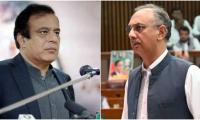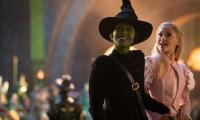The history of the Independence movement draws attention to many luminaries of that time. Some of them attained stardom but some remained unsung heroes, though their services were not less than any heroic figure. One of such personalities is of Abdul Sami Khan, popularly known as Sami Artist, the first cartoonist of the Indian subcontinent and the first Muslim cartoonist of the region.
According to Dr Reyazul Hasan’s detailed research, Sami was born on Nov 21, 1900, in Hoshangabad. After receiving his early schooling locally, he went to Bombay and joined the Anjuman Islam High School. After the school, he joined J. J. School of Art, where he received guidance and patronage of the principal, Mr. Gladstone Soloman, a noted artist and art critic of his time. He was first-class position holder throughout his academic career.
By the time he left the School of Art, Sami had already made a name as an artist of high caliber. Once awarding him a prize. The Governor of Bombay humorousaly remarked, “How long would you go on mono polishing all art prizes?” He secured a first prize in Art in the famous Wembley exhibition of 1924. Sami won another prize in 1924 for a book presented to King Edward VIII. That same year, his work was exhibited in London, earning him a certificate of high proficiency. Besides government scholarships, he also received the Tata Industries scholarship. In 1946, he was awarded a Gold Medal for his War Cartoons. The British government offered him a watch and also offered land but he refused. After his death, his only asset was his art which was preserved by his family.
Sami was famous for cartoon creation, although his true passion lay in pencil sketching. Upon completing his education, he was recommended by Marmaduke Pickthall, an Englishman editor of the Bombay Chronicle, to Maulana Muhammad Ali. The maulana after reading the note from Mr. Pickthall just by way of joke asked him if C.P. produced artists. Sami wittingly responded, "If a pearl can be found in a shell, why not an artist in CP?" Following this, Maulana would introduce him as "the pearl of CP, Sami Artist." He started working as a cartoonist for Ali's newspaper, Comrade.
Maulana used to take him to the sessions of the Indian Legislative Assembly to sketch some prominent members of the Assembly. The caricatures drawn by Sami would appear in the ‘Comrade with Maulana Saheb’s catchy captions. Under Mr. Jinnah’s caricature the Maulana wrote: “Bombay Duck resting.” Bombay Duck is a spotless white fish generally available in the waters of Bombay. Here the similarity is with Mr. Jinnah’s immaculately white dress.
After the creation of Pakistan, Sami drew a portrait of Quaid-i-Azam on a grain of rice for the Kashmir Air Squadron Fund, which also featured the Pakistani flag and Quaid-i-Azam's name in Urdu. That was sold at Rs. 2,500. Similarly, an oil painting of Quaid-i-Azam by Sami was sold for 2,500 rupees, with all proceeds donated to the fund.
Another Sami’s cartoon he created in 1948 was praised by many art critics. In the words of Inam Durrani, “At that time, many refugees were returning to India from Pakistan, disheartened and neglected, and Sami was concerned about who would uphold the nation if these architects of Pakistan left. The cartoon depicted a vision of the Palace of Pakistan, which astonishingly resembled the mausoleum of Quaid-i-Azam, even though the mausoleum did not exist on paper at that time. It was as if the artist's vision could foresee the mausoleum of Quaid-i-Azam.” As a sensitive artist, he drew the situation through his pen. Unfortunately, we see the same dejection and rejection of talented people in Pakistan who are now leaving the country.
Famous art critic of his time, who was one of the pioneering members of The News team, late Hameed Zaman saheb, in one of his articles wrote: “As the first Muslim cartoonist of the subcontinent, Sami created quite a fury in political circles to both Hindu and Muslim when his cartoons started appearing in Comrade. In fact, it was the beginning of a fruitful partnership in which pen and brush reinforced each other. The Maulana with his remarkably hard-hitting editorials and Sami with his editorial cartoons both reflected on the political and social realities of the age.”
Zaman Saheb termed this era as the golden period of Muslim journalism in English. It was a time when Maulana Jauhar with his inspired writings was leading very strongly for the cause of the Khilfat Movement to the annoyance of the rules of Imperial India: and Sami, under the guidance and inspiration of his editor, was gunning down political detractors, exposing the dubious intentions of the Hindu-Raja alliance on the one hand and warning about the disastrous consequences of internal dissent among the Muslims on the other.
“This era, spread out over the 1920s, was a period of explosive political upheavals. A series of events eventually led to the demand for a separate homeland for the Muslims. Sami's cartoons in The Hindustan Times of Delhi, Dawn of Delhi, Hindu of Madras and Civil & Military Gazette of Lahore, seemed to capture the "history of the time," to use Emerson's words who thought and exposing the Muslim political scene, his cartoons strove for a well-earned "caricatures (cartoons) are often the truest history of times." His creations also appeared in National Call, Riyast, Tej, Jang, Inqilab, Mussalman, Morning News, Imroz, and Comment.
“In his cartoons, Sami reflected the pulse of the nation, the mood of the people and the absurdity of the situation which he exploited to the fullest advantage through his art. Presenting solid middle-class virtues chuckle rather than a loud guffaw. These cartoons do not always express a scalpel-sharp irony, but more often show a touch of heart-warming humour.”
Zaman further writes that Sami was dedicated to the policies of the Quaid-i-Azam and attacked the problems from a fixed ideological position. According to some details of his arrival in Pakistan Inam Durrani wrote:
“After the establishment of Pakistan, Sami relocated to Karachi. He maintained his ascetic lifestyle, acquiring a flat on Burns Road from film actor Buddh Advani by paying a security deposit and later purchasing the furniture. The first cartoon he created for Jang depicted a matchstick transformed into a brush. He designed covers for Hamdard Trust and the educational board for many years.”
In 1957, Sami visited East Pakistan as part of a delegation from West Pakistan. At the Governor House, he sketched the then Governor Maulvi Fazlul Huq. When Pandit Nehru visited Pakistan, he attempted to acquire a sketch of his father, Pandit Motilal Nehru, drawn by Sami and captioned by Maulana Muhammad Ali. Nehru, through Liaquat Ali Khan, offered a substantial sum, but Sami declined, insisting that such a historical artifact should not leave the country.
Sami was a gifted artist, a futuristic and visionary cartoonist and a creative illustrator. To Ibrahim Jalees, “before the creation of Pakistan, there was only one Muslim illustrator and cartoonist in the subcontinent’s newspapers—Sami. He alone was fighting on all fronts against the anti-Pakistan illustrators and cartoonists. In the annals of Pakistan's creation, alongside the prominent figure of Quaid-i-Azam's typewriter, Sami's pen stands equally significant.”
Sufi Amin ur Rehman, wrote in Jang Karachi, on October 6, 1969 that Sami Sahab once made a cartoon against the British government. Summoned to a summary court, where the magistrate, an Englishman, spoke to him with his feet on the table. Sami Sahab asked for permission to sketch him, on permission, he made a sketch, saying he would publish it in the newspaper. The magistrate, realising his mistake of disrespect, was embarrassed, and Sami Saheb used his quick wit to turn the situation to his favour, preventing the sketch from being published and ending the case humorously”.
Shortly before his death, Sami's old sketches were displayed at a Hamdard evening event attended by the then Karachi Commissioner Syed Syed Darbar Ali Shah and Secretary of the Ministry of Information Mr. Altaf Gauhar. They advised him to donate these historical sketches, including portraits of Liaquat Ali, Quaid-i-Azam, Dr. Zakir Husain, and other leaders, to a museum for public benefit. When asked if he had built a house, Sami replied, "That will now be built in the graveyard." This prophecy was fulfilled on October 3, 1967, when he died almost penniless in Karachi.
Sami Khan’s granddaughter, Ghazala Ahmed Imam, while reminiscing the indirect memories of her grandfather, says: “I never met my grandfather, Abdul Sami Khan, who passed away a few months before my birth. He was a true futurist, as demonstrated by his 1948 vision of Karachi’s future. Today, I can see Karachi evolving in the manner as he had anticipated. His visionary insight astonishes me, especially his projections from 1928 about what would transpire in India a century later. He had also imagined a world we see today after the fast-paced inventions which have transformed the entire world. The creativity and artistic talent run in our family. I owe special thanks to my late maternal uncle, Anwar Sami who himself was a renowned cartoonist, and Salma Qureshi (late) for compiling my grandfather’s work into a book. I hope that future generations will remember artists like my grandfather,” she concluded.
“Though millions of miles apart, the planets seem to march together across the heavens,” says Suparco
CEC directs PTI to submit response by next hearing and adjourned hearing until February 11
Gandapur does not appear in court on Tuesday despite court summons
Azma emphasises that Punjab and Argentina could come closer through cultural collaboration
Farhatullah Babar says commission must be formed under an Act of Parliament and not an executive order
Primary focus of meeting was implementation of Women’s Property Rights Act, 2020







